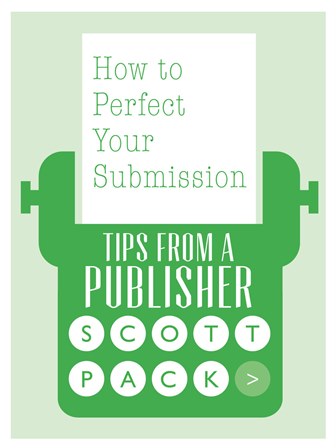Publishing veteran Scott Pack was so fed up of receiving bad submissions from authors that he wrote a book, How to Perfect Your Submission, a definitive guide on how to get it right. Here he talks about writing the perfect pitch.

These days, aspiring writers are under a lot of pressure to create the perfect pitch for their book. Perhaps it is a reflection of our modern, Twitter-influenced culture, this need to summarise your magnum opus in just a few lines. Or maybe agents and publishers are just really busy and want a shortcut to the heart of your book. It is certainly true to say that if your book gets signed up it will be repeatedly pitched to different people – from agent to publisher, from your editor to the marketing and sales team of their publishing house, from the sales team to booksellers, from your cover blurb to potential readers – so it makes sense to try to get it right from the start.
It could be argued that the pitch is the most important part of your submission. It is the first sight the agent or publisher will get of your story, and it is the story that really matters to them. Usually you would include a pitch as a paragraph or two in your query letter, or email, but these days you might be pitching in person, at a meet-the-agent event, or even on Twitter. However you go about it, here are some tips on making sure you are pitch perfect.
One paragraph
The pitch should take up one paragraph of your query letter. You could stretch to two paragraphs if you were really disciplined about length but do avoid the temptation to witter on too much. Brevity is good.
Summarise the book in under 100 words
Here’s one possible approach. Try summarising a few classic books, or some of your favourite novels, in no more than 50 words. It can be done and is great practice for your own pitch. The word count is not a strict rule, by any means, but is a good target to aim for. Do a few trial runs with books you know well before attempting to write a pitch for your own. If you exceed 100 words when in a pitch then it may be a sign that your plot is too complicated or that you are not pitching it efficiently.
Think of it like a cover blurb
This is not a synopsis. You do not have to fit everything in. You need to make the recipient want to read your book in much the same way as publishers use that back cover. Thankfully, this is really easy to research, just pick up any paperback book and see how it is done. Find some books that are similar in style, scope or potential audience to yours and copy out their blurbs. Actually type them up word for word. Do this with half a dozen or so. It may seem like odd advice but you'll find this an excellent way to analyse how it is done, to really understand how a good blurb is constructed, and you can try to replicate that style for your pitch.
This is your elevator pitch
It’s a clichéd scenario but it works. Imagine you are sharing an elevator ride with an agent or publisher and you have thirty seconds in which to pitch your story. What can you say to ensure they want to keep the conversation going when the elevator doors open? Stick that down in your pitch.
To recap, as part of the submissions process you need to summarise and sell your book in a short pitch. This is what agents and publishers want from you. You are not the exception to this rule, so don't try to be. Find a method that works for you, hopefully the above advice will help, and keep it brief! Good luck.
Scott Pack spent several years as a publisher at HarperCollins. These days he is associate editor at Unbound, the world's first crowdfunding publisher, and editor-at-large for Eye & Lightning Books. How to Perfect Your Submission is available as an ebook from Amazon and Scott can be booked as a freelance editor at Reedsy. He tweets as @meandmybigmouth.
Comments